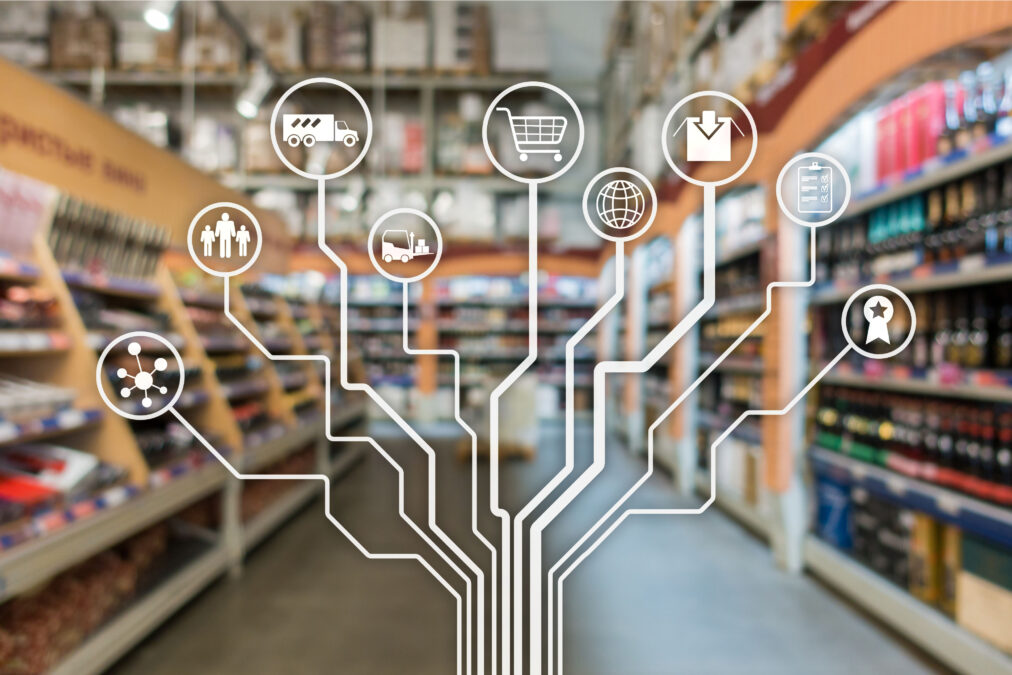Despite huge advances in digital technologies, too many consumers have been left frustrated by a lack of consistency between shopping experiences online and in retail stores.
A major research study into consumer shopping expectations and retailers’ ability to meet them recently found, for example, that 71% of shoppers expect to be able to view inventory available in a retailer’s store online. Yet only 32% retailers today offer this capability online, even though it is considered vital for providing customers with a consistent retailing experience.
A further 50% of consumers expect to be able to buy online and pick up their purchase in a store, or to ‘click & collect’. But only one a third (3%) of retail decision makers surveyed said that their companies are able to provide customers with store pick-up of online purchases, online visibility of cross-channel inventory, and store-based fulfilment of online orders.
Consistent shopping experiences
It took the likes of Amazon, eBay and NET-A-PORTER to prove it was possible to grow successful businesses transacting solely online. Now, many traditional retailers have also come to rely on their ecommerce operations as their primary engines of growth.
Take John Lewis, for example, which posted Christmas results that saw store sales increase by a healthy 1.2%. But online sales for the key five-week trading period jumped 22.6% on the previous year, with johnlewis.com accounting for 31.8% of the retailer’s total sales during this period. It also said traffic from smartphones and tablets overtook visits online via desktops for the first time on Christmas Day.
With this internet-fuelled growth in mind, many retailers have found themselves managing a proliferation of multiple customer-facing channels where, in many cases, online and mobile only add to existing store, catalogue and call centre, or even field force operations.
But, as the Customer Desires vs. Retailer Capabilities: Minding the Omnichannel Commerce Gap study demonstrates, without true integration, this ‘multichannel’ model fails to meet customer expectations.
This is because consumers see no difference between channels. They differentiate on price, service, convenience and brand. And the unprecedented impact of the digital revolution on the average shopping experience means information on all of these differentiators is available at the touch of button.
Focus on convenience and service
In fact, nearly half (47%) of the customers surveyed said they use store pickup options to avoid online shipping costs, 25% so they can collect their orders on the day of purchase, and 10% simply because they find it more convenient to pick items from a store than having them shipped to their home, especially as nobody likes a missed delivery.
The study, which was conducted by Forrester Consulting on behalf of Accenture and hybris, further underlined the fact that customers are ‘channel-blind’ when as many as 39% said they are unlikely or very unlikely to visit a retailer’s store if its website does not provide physical store inventory information.
But nearly all – 94% – of retail decision makers surveyed as part of the research said their companies face significant barriers to integrating their channels and operating a truly joined up ‘omnichannel’ business.
In fact, although 46% of retail decision makers said they already have a dedicated omnichannel team – i.e. one that includes members of all functions – conflicting priorities and organisational silos remain a key challenge.
Taking the seasonal success of John Lewis as an example, it is no wonder retailers have now come to view an omnichannel operating model as a key brand differentiator.
Essentially, it requires the ability to provide customers with that all-important consistent retail experience across all retail channels and touchpoints.
Multichannel integration barriers
One of the key findings from the study was that siloed legacy IT is a significant barrier to meeting the challenge of omnichannel – 35% of retailers cited a lack of technology spanning ecommerce, mobile and the store as a barrier to success.
At the same, it also determined that technology must have a central role to play in abolishing siloed channel systems altogether. One such related issue is around sharing customer data and analytics between channels, countries or locations and a lack of store staff training.
This could lead to a loyal, high-value online customer being overlooked by staff if they visit that same retailer’s store, for instance. Or, more often than not, it leads to customer frustration at having to repeatedly provide personal, payment or order information to a call centre, online or in a store.
The challenges to becoming an omnichannel retail operator are also not just focused at the customer-facing side of the business. A large proportion (40%) of retailers reported that they are having difficulty integrating back-office technology across all of their channels too, highlighting another key area for improvement.
The ability to have a consolidated, accurate view of real-time inventory across stores and distribution centres in order to maximise availability and fulfilment efficiency is crucial for supporting services like click & collect or deliver from store.
Maximising omnichannel returns
Achieving a single, channel-agnostic view of customers and inventory should be the primary goal of any truly omnichannel retailer.
Executing on this capability, however, is inherently complex and typically requires a retail order management system to be integrated with existing legacy point-of-sale (POS), ecommerce, enterprise resource planning (ERP) and retail mainframe systems.
Unsurprisingly then, the study found that that only 6% of retailers reported no significant barriers to becoming an integrated omnichannel company. And, although 46% of decision makers surveyed said they already have a dedicated omnichannel team, i.e. one that includes members of all functions, conflicting priorities and organisational silos remain.
Indeed, few retailers said they have defined financial business outcomes for investing in omnichannel. Instead, the primary drivers behind their omnichannel investment decisions are to meet customer expectations and respond to competitive pressures, where internal technology challenges, organisational silos and poor operational execution all continue to thwart their progress.
Sourced from Helen Merriott, managing director, Accenture Retail UK










